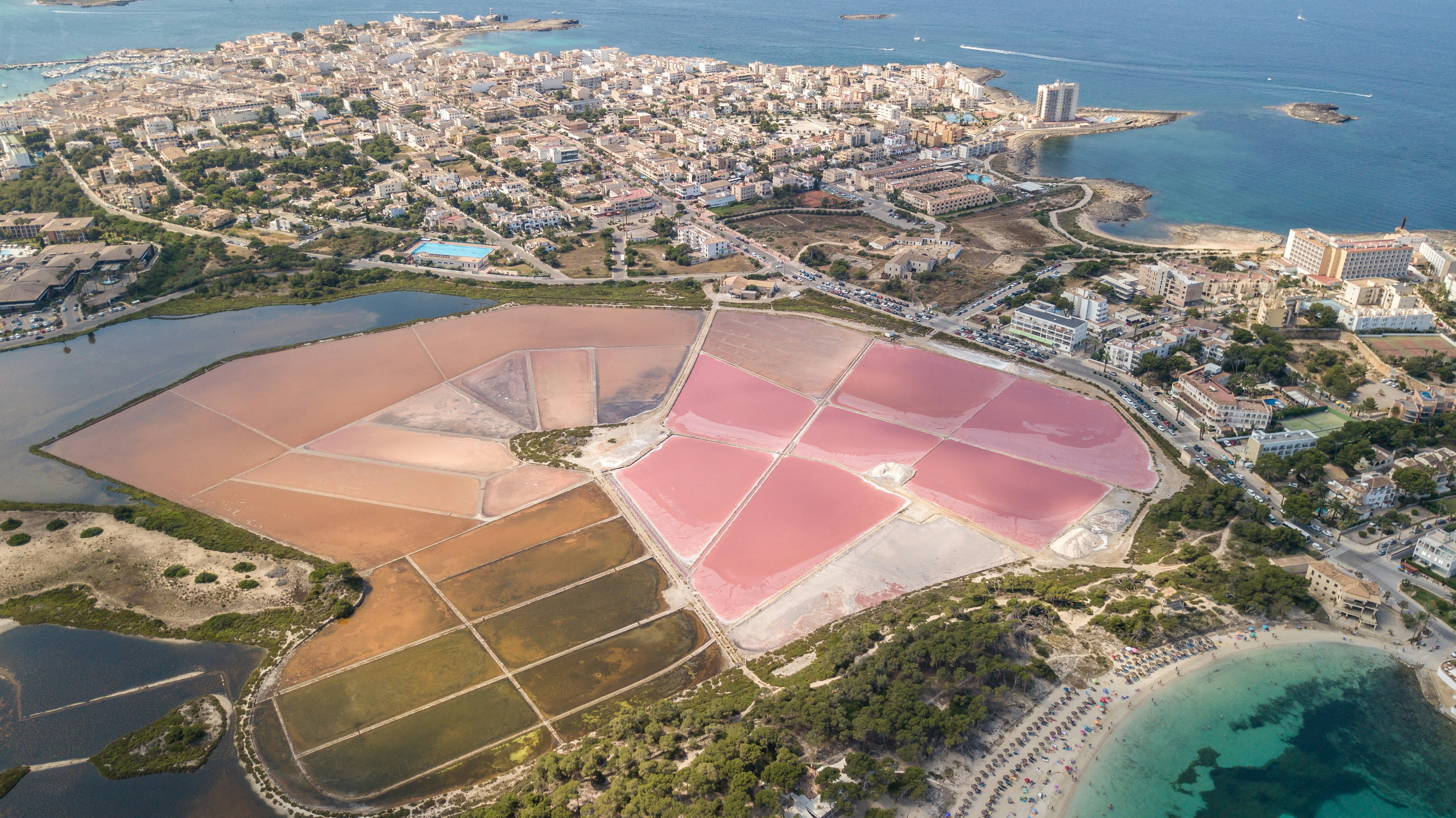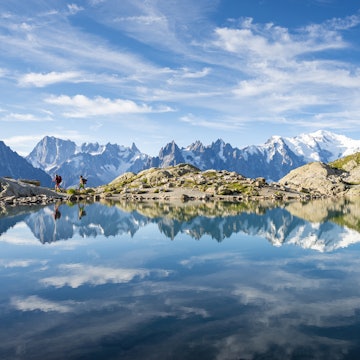

Spain's national parks, such as Picos de Europa, encompass some of the country's most outstanding landscapes. Miguel Castans Monteagudo / Shutterstock
A pioneer in environmental protection, Spain began preserving its land as national parks in 1918, decades before most other European nations. Spain has 16 national parks, from Sierra de las Nieves, inaugurated in 2021, to little-advertised Cabañeros, near Toledo, to Teide in the Canary Islands – the most visited park in Europe.
Entrance to all of Spain's national parks is free, although visitor numbers are occasionally regulated to help safeguard delicate ecosystems. Many of these natural destinations are among Spain's best-kept secrets, little known to outdoor enthusiasts used to flocking to Switzerland, Italy's Dolomites or the French island of Corsica.
Doñana
Best national park for birdwatchers
Arguably the European continent’s most important wetlands, Doñana guards the mouth of Andalucía’s legendary Guadalaquivir River. Its mixture of salt marshes, grassland and mobile sand dunes is a haven for copious bird species, wild horses and the park’s photogenic symbol – the critically endangered Iberian lynx.
Comprising the largest roadless region in western Europe, Doñana is heavily protected, and access to its waterfowl-rich wetlands is restricted to guided tours. Gravitate to one of four visitor centers to partake in short DIY walks to bird hides or more substantial organized excursions in Jeeps.
In late spring, the cusp of the park is invaded by human multitudes during the Romeria del Rocío, the mother of all religious pilgrimages when up to a million people converge, many on horseback, on the striking Ermita del Rocío on the edge of the marshes.

Sierra Nevada
Best national park for winter sports
Spain’s largest national park encompasses the mighty Sierra Nevada, which rise like icy sentinels behind the Alhambra in Granada. It’s a multifarious place incorporating history, nature and white-knuckle sports, such as paragliding and rock-climbing.
Herein lies mainland Spain’s highest mountain, Mulhacén at 3479m (11,414ft); Europe’s highest paved road, the continent’s most southerly ski resort and a necklace of Amazigh-style villages that cling to the range’s southern slopes.
Referred to communally as Las Alpujarras, these villages were the last refuge of the North African Muslims in Spain. Summer months reveal wild landscapes with a rich natural bounty that includes nearly one-third of Spain’s native plant species and the country’s largest ibex population.
Multiday walking paths link whitewashed villages with traditional flat-roof houses offering cozy overnight accommodations.

Ordesa y Monte Perdido
Best national park for under-the-radar hiking
Underrated and lightly trodden by non-Spaniards, the nation’s second-oldest national park is also a Unesco Biosphere Reserve and World Heritage Site. Abutting the Pyrenees and Spain’s frontier with France, Ordesa y Monte Perdido is admired for its deep, canyon-like valleys overlooked by foreboding limestone cliffs that furrow dramatically toward the craggy summit of 3353m (11,000ft) Mt Perdido (Lost Mountain), the third-highest peak in the Pyrenees.
Heading an impressive list of flora and fauna is the limestone-clinging edelweiss and the huge bearded vulture, notorious for dropping animal bones from a great height. The park’s toughest hikes teeter along narrow cliffside paths called fajas. A far less vertiginous ramble is the classic 8km (5-mile) walk to the Cola de Caballo (Horsetail) waterfall, set in a spectacular cirque in the shadow of Mt Perdido.

Teide
Best national park for family-friendly hiking
Europe’s most-visited national park isn’t geographically in Europe at all – it’s located 200 miles off the coast of North Africa in Tenerife, the largest of the Canary Islands. The centerpiece of the Parque Nacional del Teide is Spain’s highest mountain: 3718m-tall (12,198ft) Mt Teide, a brooding volcanic dome that dominates the whole island and casts the world’s largest shadow over the surrounding sea.
Around four million visitors a year are drawn to the mountain’s surreal lunar landscapes. The majority take advantage of the Teide cable car, which takes you to within 201 vertical meters (660ft) of the summit in eight minutes. For walkers, it’s a tough but rewarding five-hour climb. If you can’t take the heat, the park has 20 more well-marked trails, and some of them family friendly.
Hidden Tenerife: best places to avoid the crowd

Picos de Europa
Best national park for iconic mountain hikes
The first of Spain’s 16 national parks to be established in 1918, Picos de Europa captures a mishmash of glaciated peaks and alpine meadows in northern Spain, spread over a trio of mountain massifs. Despite its proximity to cities such as Santander and Gijón, the park is isolated enough to harbor tiny enclaves of Cantabrian brown bears and Iberian wolves and is at its quietest in winter.
The Picos de Europa is superb walking terrain. The panoramic highlight, and one of Spain’s finest walks, is the 12.1km (7.5-mile) Ruta del Cares, which kinks through the steep-sided "divine gorge" with dizzying drops, precipitous cliffs and dark tunnels punctuating the route.
Sierra de las Nieves
Best national park for walking among rare trees
More than six years in the making, Andalucía’s serene Sierra de las Nieves finally became a national park in June 2021, occupying a swath of largely uninhabited mountains between Ronda and the crowded Costa del Sol.
The area has long been known for its rare trees: cork oaks and elegantly conical pinsapo (Spanish firs) grow here, plus a gnarly ancient chestnut that’s allegedly as old as Córdoba’s Mezquita. The small whitewashed village of Tolox is an ideal place to access the park’s light network of trails.
One of the finest routes delivers you to the top of western Andalucía’s highest peak, 1919m (6295ft) Torrecilla, via serene sweeps of pinsapos. In winter, the summit is coated in the nieve (snow) that gives the park its name.

Cabañeros
Best national park for getting off the beaten track
Passionate protests prevented this pastoral pocket in central Spain from being turned into a military firing range in the 1980s. Despite its news-making origin story, Cabañeros remains one of Spain’s least trammeled parks, with fewer than 100,000 annual visitors.
What the masses are missing is a charming network of dehesas (oak pastures used for grazing) that speckle the plateaus of Castilla-La Mancha and the Montes de Toldeo, a land made famous by Don Quixote. Keep an eye out for Iberian lynxes – in 2015, more than a dozen were reintroduced to the wild in the park.
Visits to the region can be tied into a trip to the historic city of Toledo with its intertwined Christian, Muslim and Jewish history.

Cabrera Archipelago
Best national park for water-based activities
A park with a human population of precisely zero that covers an area measuring more than 104 sq km (40 sq miles), most of it sea, the Cabreras are deliciously uncrowded. Welcome to one of the best protected slices of coast in the Mediterranean, an archipelago of 19 islands and islets that lies a mere 16km (10 miles) off the coast of the busy holiday isle of Mallorca in Spain’s Balearics.
With the park earmarked mostly for research, only one of the islands – Illa de Cabrera – can be visited by the public on carefully controlled boat trips (up to 300 people per day) out of Colònia de Sant Jordi. The dry hilly landmass is home to lizards, birds and an abandoned 14th-century fort.
To explore the watery elements of the park, relax on Sa Plageta, a rustic beach accessible by boat, or pre-arrange a snorkeling trip into the archipelago’s well-preserved marine environment.
















